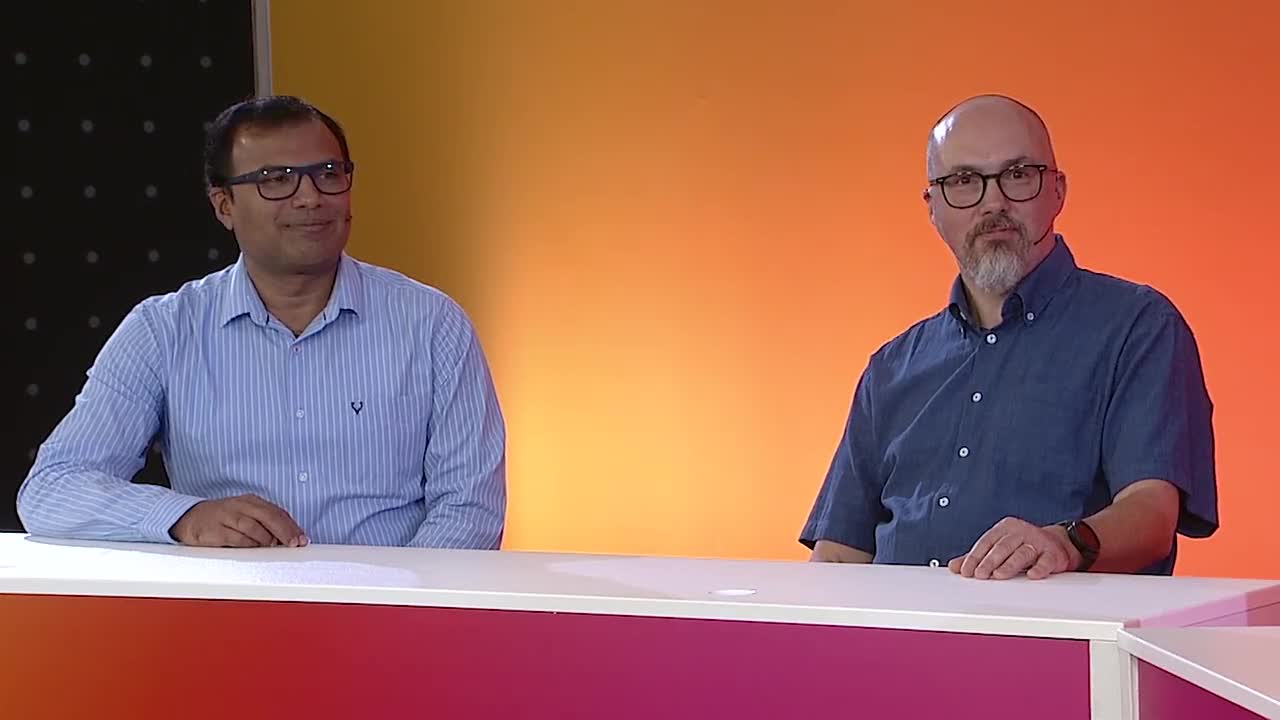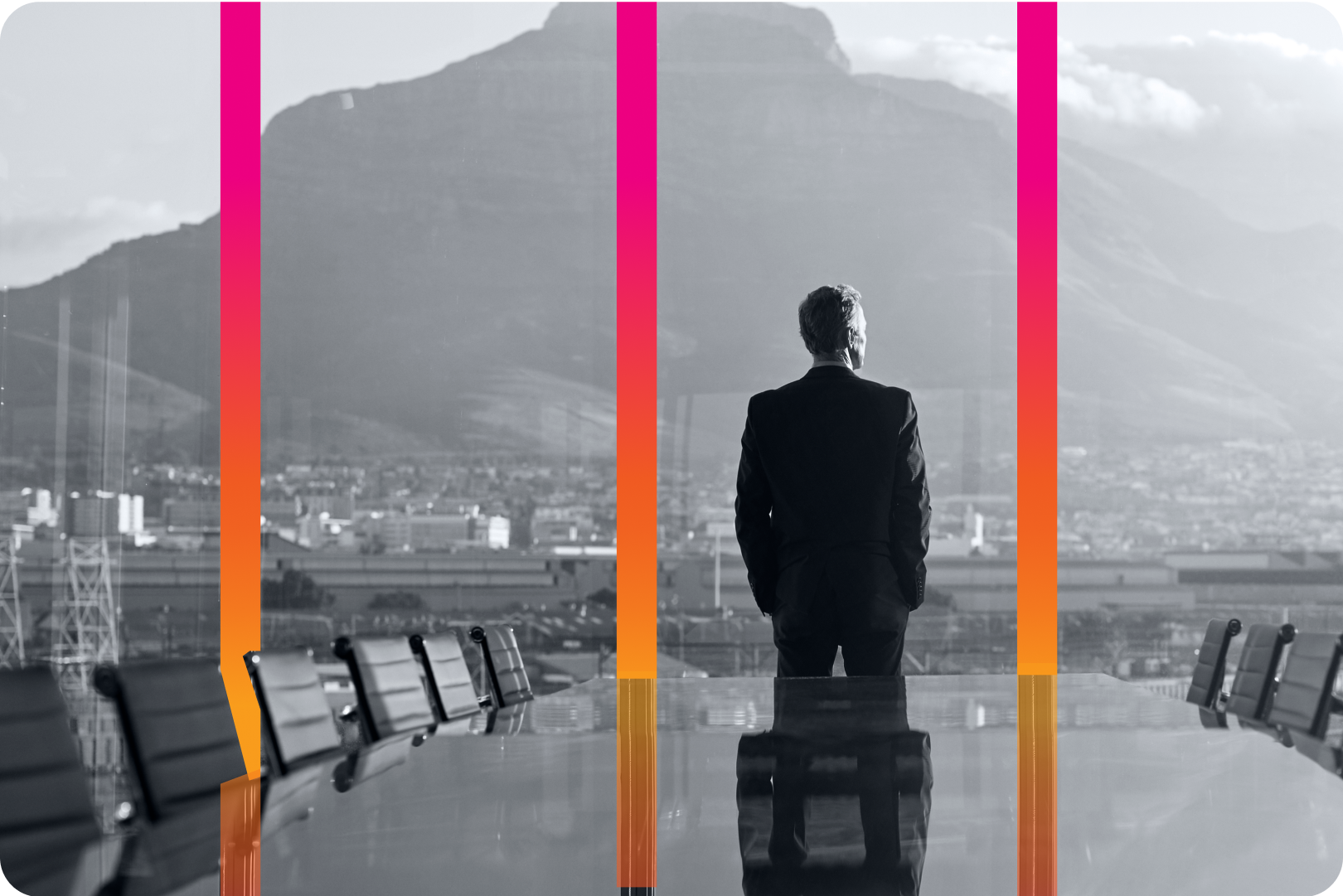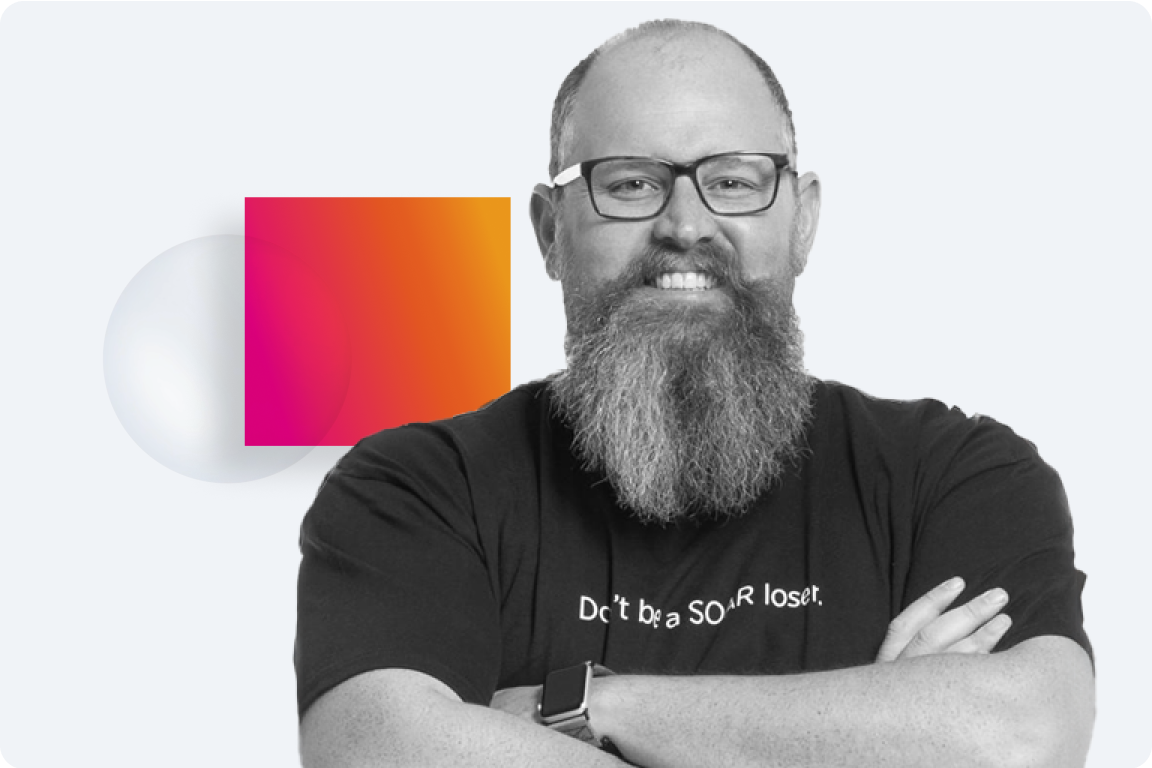Note: This is an auto-generated transcript, which may contain errors.
Shaun Cooney: Hello and welcome to Splunk Perspectives, a podcast for Leaders by Leaders where we explore cybersecurity and technology topics with our guests. And I'm joined here today by my colleague Kirsty.
Kirsty Paine: Yeah. Good morning, good afternoon, good evening everyone. Whatever time you're listening to this, great to be here. And today, we're talking about the important topic of tool consolidation. Now, we know that many organizations are looking to consolidate their tooling for many and varied reasons.
I wanted to have a look at what this topic really meant. So I went straight to the Oxford English dictionary. I am a Brit, after all. And the word consolidate has two meanings. The first is to make something stronger or more solid, but the second is to combine a number of things into a single, more effective or coherent whole. And that's what we're going to be discussing today, how we can do that with tools to combine and reduce the number of tools that should result in a much more solid and stronger outcome. So you're spread less thinly. So that's what we're talking about today.
Shaun: Who else have we got here? We are privileged to welcome Inter IKEA here today. So we have Magnus and Arun. Nice to, nice to see you both. Thank you very much for joining us today. Maybe if I can ask you to introduce yourselves.
Magnus Lord: First of all, sure, I'm Magnus Lord. I'm a functional expert on the topic of observability in Splunk-based solutions. I'm working in Sweden and this is my colleague.
Arun Prasad: Hello, thanks for having us here. I’m Arun Prasad and I'm working as a business analyst with the monitoring team for Inter IKEA. Thank you.
Shaun: Great. Thank you very much. So you are part of Inter IKEA. Yeah, which a lot of our audience has probably never heard of. If we're honest, I hadn't heard of Inter IKEA until a few days ago when I met you for the first time. So maybe you could share with our audience a littlebit about the difference between IKEA and Inter IKEA.
Magnus: So there is two different entities here that we are talking about in Inter IKEA is the franchiser. So we hold the brand, we are responsible for product development, the product range, also the supply chain, marketing material – everything to support our retailers and there are… 13 of them in total. And the biggest one is Ingka IKEA. So they are basically the store. They are the one that is selling everything. So we are aligned. We have a lot of collaborations with all the retail groups and we, in some cases, also have shared infrastructure and a shared environment. It's where we're sharing context.
Kirsty: OK. So it sounds like a really complex mixed environment – much more than what people are thinking of, just the shop where you buy your furniture. There's a whole backstory to what's behind the scenes. So um we wondered if we could talk today for you at least what do you think are the main drivers behind tool consolidation? Why are organizations looking to do this? Arun, let's start with you.
Arun: Yeah, I can just start with a brief introduction on this. So there is a great industrial saying on the same topic, observability, the main purpose is to make the data observable and make available for the multiple teams as well as management across various organizations. It can be sold by using the right tools with the right incorporation. If any organization is using multiple tools, five tools or 10 tools, it is not going to make the observability simple or more observable. Rather, it is going to make the scenario more complex and it will be more tough to maintain also. So starting from there, if we can say some of the good points regarding the consolidation of the tools, maybe the first is like reducing the complexity of the environment itself, maintaining a big technical enrollment with the multiple tools and maintaining the data which is getting produced in multiple repositories. It makes the life harder and harder for the technology people as well as for the managers. And also you will not be able to make a E two E view, or end to end view, of the data which is originating from one source and which is traveling to the multiple sources. Because a unified dashboard will be a little tough to make with the multiple tools maybe just toElaborate more on this particular topic. I'll just hand it over to Magnus.
Magnus: Yeah. So correlation is the key. Regardless of the tools that you have in your portfolio, they need to be able to play nice with each other. So either they are just producer to each other or you can search across the different entities regardless where the information is. However, they need to be able to play nice together, they need to be able to communicate with the same type of framework. So we are reusing the knowledge, we're using the knowledge objects and uh being ‘constructive lazy,’ I would say um because you don't want to do the same thing repetitive all over the place.
And the second topic I would like to talk about a little bit on the aspect of tool consideration isone of the biggest driver is of course cost. And uh it's not about that we are going to reduce cost, is making sure that we get the right value, the business value and the empoweringthe everyday people, making their day a little bit better every day. And for us that is one of our core values in IKEA. Also is within IKEA'S genes to be aware of the cost. So every pieceof furniture we start developing, we start with setting the price and then we develop within the concept of that same thing with our tools. We should be able to identify the costand the cost drivers within the tools. No one really likes an invoice where it just says one line, "monitoring" and then a sum and you have no insight at all. So what we are trying to nowis to be completely transparent about the cost, regardless of the tools we are identifying and describing how the license model is built up. We identify the different signals that can be relatedto the license models, but also to each tenant. Each tenant could be part of the organization, a team where you can actually be able to identify, who should I talk to when we have a huge amount of ingest or a huge amount of users. So not that we are going to say ‘You need to cut back,’ but rather ‘Can we help you? Can we skin the cat a little bit differently here? Can we improve? Do you really like to have these metrics every five seconds or is it a little bit later, like one hour is good enough? What is good enough for you?’ So the ambition on each team driveshow we are implementing a tool, but they also get insight of the cost. So they are possible to affect their share of the cost. And also how we can then elaborate, can we change the tools? Can we do it a little bit different, better, or can you still achieve the same result?
Kirsty: Yeah, I think that's really interesting of the aspects you're drawing out there. The job is hard enough without having to wrangle between different tools just to get one end to end view. And I actually love the idea that you're taking – your approach towards furniture and cost building from the start and taking that approach to your tooling. I love that analogy. That's great.
Shaun: Yeah. So maybe I could try and summarize that. So it's a combination of cost saving or at least maintaining cost, managing your cost whilst also maintaining or at least improving your user experience and value. Great. Perfect.
Magnus: It doesn't really matter which tool we have. If you don't master the tool, you don't get the value out of it. We need to solve the problems that we are facing in our organizations, in our everyday. We need to make sure that we can go home, happy to our family and rest assured that our tools are keeping track of our environments. We are on top of things, we are ahead of the curve and we are able to act faster with the right tools with the right cost. It doesn't really matter. The value is the key here.
Shaun: Great. So when you're trying to find the right tool to do your tool consolidation, how do you decide or what do you look for when you're trying to decide which tools to invest in next or which tools to keep?
Magnus: So it doesn't really matter if you're looking to invest in something new, you also need to reflect on what you have already today. So, Arun and I have done an extensive work of analyzing all the capabilities that we have in our portfolio, not to make sure that they are overlapping or not, but try to identify what is the differences here. Is there any special aspect that we need to consider? And when we are in the inflow team talking to the new consumers that are coming to our central monitoring team, we're trying to assess the persona. What is the type of deployment you have? Are you on the shared environment or do you own the stack in the cloud? Do you own your code? Maybe APM is good for you. If you don't own your code, we have other solutions to get the insights. So here we are trying to identify the persona, the team, how we can … with the best type of capabilities. And for that, we have a matrix so we can actually look at what is best suited for everyone because we are different. Everyone is having their special need.
Kirsty: Yeah, I think looking at our delta is a really sophisticated way to approach it. Quite often, we look at what's the same, but really you need to see the differences to make the most of that value. So we've had a good, you know, counter through why you should be consolidating your tooling and I'm sure a lot of our listeners will be thinking. ‘Yeah. Yeah, I should do that too.’ But a question for you. Why now what would be the key point where you realize, you know what I have to do this? Now, it's become too much of a problem. What is the driver to do it today?
Arun: If I can just raise a good driver for that is like most of the companies, they will be starting investing in multiple tools and not taking the right decision at the right time. Which tool has to invest is one side. At the same time, there is a different angle where we are trying to grow the data. If the data is growing extensively in one side and later, if the enterprise is identifying, no, this is not the way we have to, then a lot of rework is going to happen. And more than the cost of the tool which is going to get changed from one tool to other tool. It is the time as well as the cost and effort, the more main drivers which are behind this. And also what will happen to the data? The data may be resetting in one format in one tool and you have to take it into another format to another tool. The repository change may not be easy. So it will be making the life more tougher and tougher early.
Also just adding one more point to the tool consolation. Tool consolation doesn't mean that we can do everything with the one tool itself. There should be tools coexisting. But for the right purpose, say, for example, any organization has a CDN and the CDN will be best to monitor with the native tool with the CDN itself because they need to be having a real time approach from the side of the CDN. And later, it can be translated into the tool and visualized in a dashboard.
Shaun: Yeah, great. So it sounds like you've got a very complex organization and a set of organizations that have to work together. Tool consolidation even in a small organization is tough, right? It really is tough. So I'm sure you've gone through a whole bunch of different challenges on your journey as you've worked through this, could you share with our audience, maybe one or two of them?
Magnus: So we have the same set of challenges as everyone else. We are going into a new agile ways of working with a lot of autonomous DevOps teams that think that, ‘Well, I'm a DevOps engineer and I can maintain my own observability stack as well,’ but that is not their main purpose, right? So we need to be able to be enable for them. We need to also be strong in our vision and and directors and ideas that use this set up, and then you can reuse a lot of knowledge out of the box. Use this development portal where you have templates where the log framework and observability is built in from the start. So the entry step to the central platforms are so easy to they want to get there.
We need to make sure also to look at which type of tools we need to have for correlation where we are enabling security and DevOps into one view. But also sometimes you need to split the data to an observability platform really next to the system because monitoring is driving automation. You need to be able to scale up, scale fast and then you don't really afford to have a latency. So it depends, but you need to be aware of this and take decisions based on facts, based on experience and based on how we can support the organization.
Kirsty: So it sounds like you're in quite a good position now. You know, it's been a bit of a journey to get there with all the complexity, but you're there now. So if we look further ahead, how do you avoid doing this exercise again, how do you avoid that tool bloat once you're in a good position, or is that even possible? Do you think it's natural that's going to happen over time? And you just need to make sure this exercise is repeatable?
Magnus: Exactly. The only constant in IKEA is change. So we need to reflect on where we are, where we're heading. We can outline the road map for the next two or three years, but we need to revisit that on even down to a… level. And we need to anchor that within the team so we achieve consensus. When you have that, it's much better to implement what you are wishing ahead. So yeah, it's a constant journey and it's not a one thing that you do and then throw away.
Kirsty: It’s not a one and done, you have to revisit this. Well, the joy you have to look forward to. Do you think it will be simpler to do it – now, you've done it once, this exercise – to repeat it again? Have you got some repeatable patterns that work that you could maybe share today?
Magnus: Our processes are, our workflow is being set up in such a way that we can reuse it regardless of the technology. So if we do it right from the beginning, you can then take the identified indicators and just say here, ‘go ahead, implement, we know the data and all of that.’
Kirsty: So, um yeah, so perhaps, you know, if you're feeling a bit demoralized because it's taking a long time this first time, don't. Because investing in that will make you feel a lot better. You will get there the next time, a lot quicker. Super.
Shaun: So I wonder if you've done this now and it's been tough and you think you can do it again in the future? Would there be anything that you would do differently next time?
Magnus: What do you say, Arun?
Arun: It is always good to try, try new things. And because industry is constantly changing, every tool is changing technology as we have discussed, like it is getting complex day by day. So we always have to try something new.
Shaun: Great. Well, perfect. Thank you so much. That's been really insightful. I hope you found that too. Kirsty.
Kirsty: Yeah, for sure. I think um it's a tough topic, tool consolidation. We really got to grips with it and it's great to hear some success in the field. So congratulations to you both for receiving that and thanks for appearing with us today.
Magnus: Thank you for having us here.
Arun: Thank you very much.
Shaun: So, uh thank you very much everyone here today. This has been Splunk perspectives. I'm Shaun Cooney. Thank you very much for listening and we'll see you again soon.






